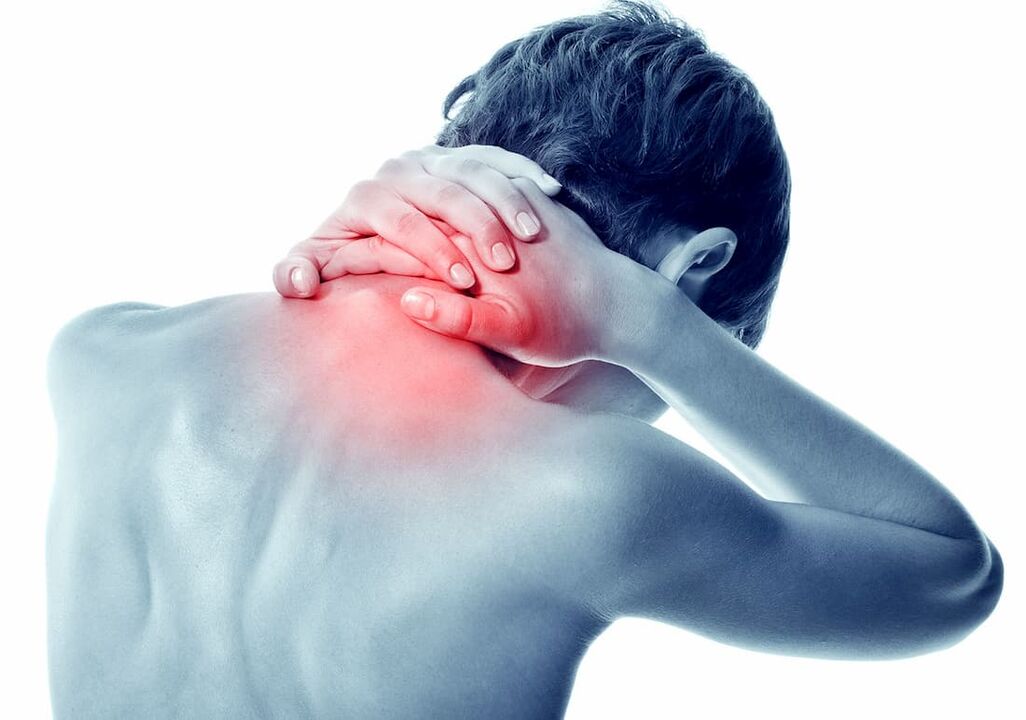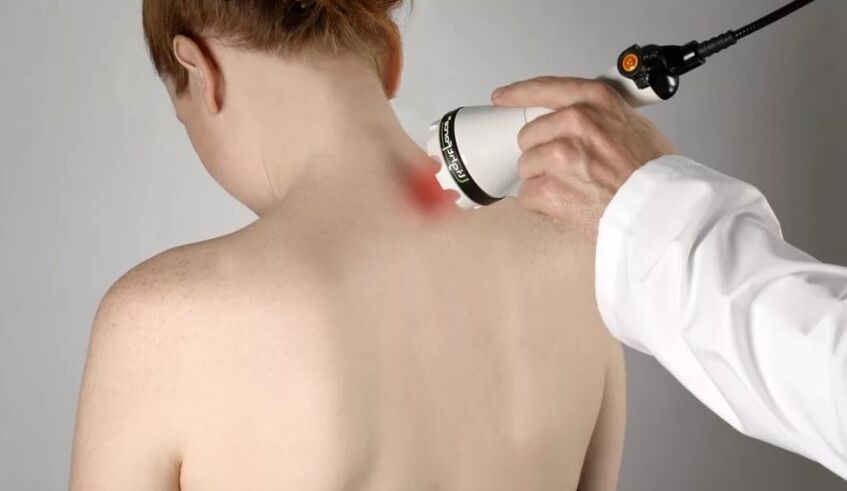
Cervical osteochondrosis is a chronic dystrophic disease in which the discs are thinner located between the vertebrae, followed by their bone tissue.As the degenerative process progresses, the surrounding structures are included.This is the reason for the development of a whole complex of symptoms that fully subjugate the patient's life.
General information
The intervertebral discs consist of a gel -shaped core and a dense fibrous ring that surrounds it, covered with a layer of cartilage on the top.They perform a function of overturning the shock, preventing vertebral damage while running, walking and jumping, and also contribute to the movement and flexibility of the entire spinal column.
In the process of natural aging, as well as in conditions of load growth, there is a gradual decrease in the height of the intervertebral disc.Metabolism at its core is disturbed, the cracks appear in the surrounding fibrous ring.Disk process - extensions and hernia occur.As the disease progresses, the cartilage tissues and bones are involved in it, osteophytes occur - bone growth that causes mobility restriction and pronounced pain syndrome.
Since pathological changes occur in the immediate proximity of the spinal cord and its roots, this leads to their compression and inflammation, as well as the reflex development of the muscle spasm.As a result, a person experiences the characteristic symptoms with which the disease can be suspected.
Reason
Osteochondrosis of the cervical spine refers to multifactorial diseases.It arises against the backdrop of a whole complex of factors, each of which exacerbates the course of pathology.List of reasons includes:
- excess body weight;
- sedentary lifestyle;
- Sitting work;
- improper behavior;
- Chronic diseases of the muscular -skeletal system (scoliosis, flat feet) that contribute to uneven distribution of load on the back;
- congenital pathology of the development of the spinal column as well as damage;
- excessive loads, repeated on the back;
- Hereditary predisposition.
Symptoms and syndromes
Symptoms of cervical osteochondrosis do not appear immediately and, often, disguised as other diseases.
The most common signs include:
- Dizziness: As a rule, with osteochondrosis, it is systemic, ie.It seems to a person whose surrounding objects rotate in front of his eyes;
- Pain in the area, neck, collar area: its intensity depends on the degree of development of the disease;Light and episodic at an early stage, it spreads throughout the head and acquires a constant character;The attacks periodically become unbearable, as a result of which a person cannot move their head;
- Noise or bell in the ear: arise when a position changes after a long period of immobility, often accompanied by dizziness;
- a sense of lack of air, the inability to breathe deeply;In severe cases, severe breathing develops;
- Nausea and vomiting: associated with circulatory disorders in certain areas of the brain, intensify when you try to turn your head;
- Vision reduction, glowing flies or fog before the eyes: show an insufficient supply of brain blood;arise with advanced stages of the disease;
- Fluctuations in blood pressure, poorly suitable for correction with medication;
- the sudden dimming caused by spasm of blood vessels;
- Feeling a lump in the throat, pain, dryness, swallowing problems: they are often one of the first signs of pathology;
- pain in the shoulder joint;
- Numbness of the fingers.
In addition to the general signs of cervical osteochondrosis, some characteristic syndromes of this disease are distinguished.
Vertebral syndrome
The complex of symptoms is associated with bone damage and spinal column cartilage.It includes:
- violation of mobility in the cervical region;
- pain in head turn;
- X -surrounding signs of vertebra damage and space between them.
Vail artery syndrome
Symptoms are caused by the narrowing or spasm of the vertebral arteries that partially responsible for the blood supply of the brain.Is manifested by the following signs:
- noise in the ears;
- dizziness;
- dance in blood pressure;
- nausea and vomiting;
- headache;
- visual impairment;
- decrease in performance;
- drowsiness;
- Fainting.
Cardiac syndrome
Resembles a condition with heart muscle damage and includes:
- pain or burning sensation after sternum;
- weakness and fatigue;
- Fast pulse.
Novice syndrome
The condition is associated with damage (compression or pinch) of the nerve roots that come out of the vertebral column in the cervical region.Depending on the level of loss, a person may feel:
- numbness or pain in the back of the head;
- numbness of language;
- Collarbone pain, difficulty swallowing, hiccups;
- discomfort in the shoulder area that intensify with hand movements;
- pain in the area of blades and forearms;
- numbness of the index and middle fingers;
- Numbness of the finger of the ring and the little finger.
Most often, some nerve roots are involved in the pathological process immediately, as a result of which some characteristic symptoms are observed immediately.
PHASE
In the development process, cervical osteochondrosis passes four consecutive phases (degrees), which determine the severity of the symptoms and the general condition of the patient.
- Phase One.The thickness of the intervertebral discs decreases slightly.Symptoms are practically missing, sometimes there is a slight discomfort in the neck, for example, with a long stay in an unpleasant position.
- Stage 2. The height of the disk becomes even smaller, the pathological growth of the cartilage tissue begins, extension occurs.The pain becomes stronger, stiffness in the cervical region joins it.
- Phase 3. The fibrous ring surrounding the core of the disk is destroyed, an intervertebral hernia is formed.The spinal column is significantly deformed, the risk of displacements and subluxation of vertebrae increases.Pain becomes persistent in nature, other symptoms of osteochondrosis join it.
- 4th stage.In the spinal column, irreversible changes appear: bone growth occurs, the intervertebral disc is replaced by a scar tissue and loses the ability to depreciate the load.Symptoms become pronounced and have a significant effect on the patient's lifestyle and his well -being.The quality of life is reduced.
Troubleshooting
In search of the causes of pain or dizziness, the patient can contact doctors of various specialties: therapist, cardiologist, gastroenterologist, neurologist.To diagnose osteochondrosis, a comprehensive examination is required, which includes:
- X -Ray and calculated tomography are effective only in the late stages of the development of the disease, when the changes become clearly visible;
- Magnetic resonance tomography: due to a high degree of visualization, even allowing you to see initial changes;Currently, it is the main method of diagnosis;
- Double scan of head and neck arteries: allows you to evaluate the quality of blood flow, identify the narrowing of vessels;It is used to determine the causes of headaches and dizziness.
The mandatory study and examination of the patient, the determination of pain areas and the degree of mobility of the spinal column is evaluated, the quality of the reflexes becomes the quality.For differential diagnosis with other diseases with similar symptoms, it may be described:
- ECG, heart ultrasound;
- daily ECG monitoring and blood pressure;
- X -Ray of chest organs;
- Consultation of close specialists: cardiologist, Laura.
Treatment
Treatment of cervical osteochondrosis requires an integrated approach and includes:
- medical effects;
- physiotherapy;
- Physical education of physiotherapy;
- massage;
- Surgical treatment.
Treatment
The main purpose of drug treatment: relieve pain and dizziness, restore the normal functioning of the nerve roots, and also, if possible, stop or slow down the destruction of cartilage tissue.Depending on the situation, they are described:
- Non -inflammatory drugs non -inflammatory: aimed at relieving pain and inflammation;They are used in the form of tablets, injections, ointments, plaster;
- Steroid drugs: are also used to relieve inflammation with NSAID's ineffectiveness;
- Musorexants: medicines that eliminate reflex muscle cramps, due to which pain decreases and blood circulation improves;
- B vitamins in the form of injection or tablet medicines: Contribute to the improvement of nerve impulses;
- sedatives with severe pain syndrome to improve sleep and reduce the emotional component of pain;
- Anti -reduction agents when drinking nerve roots;
- Chondroprotectors: drugs that contribute to resetting cartilage tissue.
Depending on the symptoms, medicines can also be prescribed to improve microcirculation in brain vessels, medicines that block nausea and dizziness, etc.
Treatment not -drug
Non -Drug treatment methods are used out of irritation.Depending on the clinical situation, they are used:
- Physiotherapy:
- Laser therapy;
- magnetotherapy;
- UHF therapy;
- phonophoresis and electrophoresis;
- massage;
- Physical education of physiotherapy;
- acupuncture;
- manual therapy;
- Underwater withdrawal.
Non -Drug treatment helps reduce the severity of symptoms and reduces frequency and irritation.Acts indirectly:
- improves blood supply to the affected area, metabolism and regeneration processes;
- increases the effect of medication;
- Promotes strengthening the muscle frame and stabilizes the spinal column;
- reduces load on vertebrates;
- Eliminates muscle cramps and blocks.
Surgical treatment

Surgeon assistance is needed in advanced cases of the disease, when medication methods are already ineffective.Currently several operations are used:
- surgical removal of a disc herniation (microdiscectomy, endoscopic surgery or transfasses);
- Laminectomy: Removal of spinose processes or vertebrae arches, due to which the spinal cord load is reduced;
- Nucleoplasty: Elimination of hernia by removing part of the essence of the intervertebral disc.
It is important to remember that only a doctor can decide how to treat the cervical back osteochondrosis.The scheme is individually compiled, taking into account the stage of the disease, the associated pathologies and individual characteristics of the patient's body.
Complications
Osteochondrosis causes a violation of the most important structures: blood vessels and nerves.Without treatment, the disease can lead to the following complications:
- ischemic stroke;
- loss of sensitivity or motor function of the hand;
- the difficulties of swallowing;
- violation of the thyroid gland;
- Significant loss or decrease in visual acuity.
Moreover, the loss of discs and intervertebral joints leads to a significant restriction of neck mobility.
PREVENTION
If you pay attention to the prevention of cervical osteochondrosis, even with existing changes, their progress will slowly slow down.Doctors recommend:
- Direct an active lifestyle, prevent hypodynamine;
- minimized or excluded severity;
- Sleep on an orthopedic mattress and pillow;
- Heat regularly if necessary for long -term computer work.
The perfect sport for osteochondrosis is swimming.Water discharges the spinal column, and active movements contribute to the formation of the muscle frame.


















